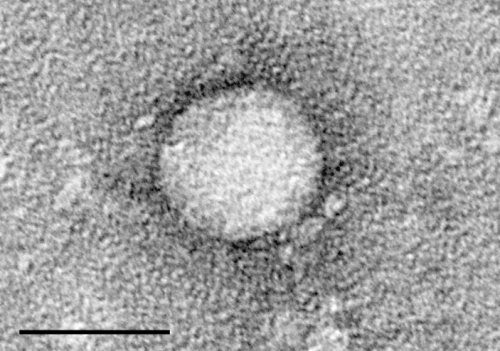Helping doctors predict what's next for patients diagnosed with Hepatitis C

A team of researchers at the University of Michigan Health System has developed a risk prediction model that helps identify which hepatitis C patients have the most urgent need for new anti-viral drugs.
Rallying baby boomers to be screened for hepatitis C took off as effective treatments emerged to wipe out the liver-damaging virus. But high costs that can rise to more than $80,000 for a round of treatment have complicated the promise of providing curative treatment for the estimated 3.2 million people in the United States with hepatitis C.
For most patients, the disease will remain stable without treatment, perhaps for years and years, while one-third will have high risk of complications and need immediate care to prevent the virus from causing further liver damage, according to the U-M research.
The model, described in the June issue of Hepatology, uses routine lab values and machine-learning methods to help doctors predict the health outlook of patients diagnosed with hepatitis C.
"Offering immediate treatment to patients identified as high risk for poor health outcomes would allow these patients to benefit from highly effective treatments as other patients continue to be monitored and their risk assessment updated at each clinic visit," says lead study author Monica Konerman, M.D., MSc., a fellow in gastroenterology at the University of Michigan Health System.
Using a dataset from a previous National Institutes of Health study the Hepatitis C Antiviral Long-term Treatment Against Cirrhosis (HALT-C) trial, the U-M team used clinical data such as age, body mass index and virus type and routine lab measurements to estimate patients' risk of progression of liver disease.
The strength of the new model includes incorporation of many more lab values than most traditional models can handle. Plus, machine learning methods help analyze how lab values change over time, including the slope and acceleration of lab values such as platelet count, hepatic panel and AST to platelet ratio index (APRI), lab markers of liver injury and liver health.
Among the patients predicted as low-risk, only 6 percent will have cirrhosis (liver scarring) complications in the next year, compared to 56 percent in the high-risk group, according to the U-M study model.
"Ideally we would treat all patients. Until logistic and financial barriers are solved, clinicians and policy makers are faced with trying to target these therapies to patients with the most urgent need," Konerman says. "The model allows us to identify these patients with greater accuracy."
The risk prediction tool can be added to an existing electronic medical record as a health care decision guide for doctors. It can establish how often patients come in for doctor visits or and have monitoring tests.
The groundwork is being laid to make care accessible and affordable, including drug cost discounts for certain health care programs, and increased competition among drug companies that could potentially drive down prices.
More information: "Improvement of predictive models of risk of disease progression in chronic hepatitis by incorporating longitudinal data," Hepatology, official journal of the American Association for the Study of Liver Disease, Vol. 61, Issue No. 6, June 2015.















